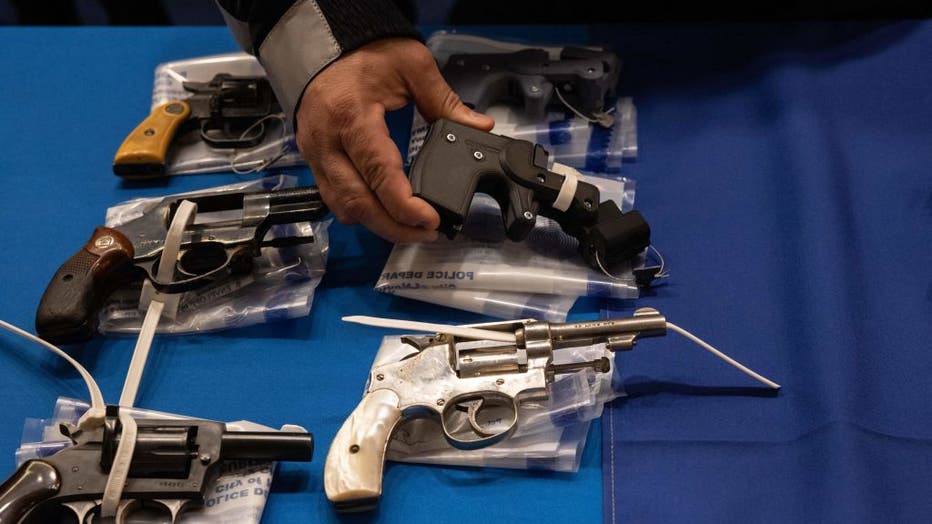Supreme Court to hear challenge to ghost-gun regulation: Here's what that means
SCOTUS rules on federal gun law
The Supreme Court on Friday upheld a federal gun control law that is intended to protect victims of domestic violence.
LOS ANGELES - The U.S. Supreme Court appears ready to uphold a Biden administration regulation on ghost guns, which have become increasingly common at crime scenes. The rule requires manufacturers to treat ghost gun kits like traditional firearms, imposing serial numbers, background checks, and an age requirement of 21 or older.
Ghost guns are difficult to trace and have been linked to a rise in gun-related crimes. From 2018 to 2021, the number of ghost guns recovered by law enforcement surged from fewer than 4,000 to nearly 20,000, according to the Justice Department. While the numbers have plateaued in some cities, the use of these weapons remains a concern for law enforcement.
What are ghost guns and why are they controversial?
Ghost guns are kits or components that allow individuals to assemble a firearm at home. They typically lack serial numbers, making them difficult for law enforcement to trace. These kits often require minimal assembly, like drilling a few holes, which makes them accessible even to people with limited technical skills.
Proponents of the regulation argue that ghost guns contribute significantly to crime. Critics, however, contend that the rule overreaches by regulating gun parts rather than fully assembled firearms.
How does this case relate to federal agency power?
The legal issue at hand is about the authority of federal agencies like the Bureau of Alcohol, Tobacco, Firearms and Explosives (ATF). The case, Garland v. VanDerStok, follows a previous ruling where the Supreme Court struck down a Trump-era ban on bump stocks, another gun accessory. The court found that the ATF had overstepped its regulatory power by categorizing bump stocks as machine guns.
The challengers in this case argue that the Biden administration’s ghost gun rule similarly oversteps, claiming the Gun Control Act does not give the government authority to regulate gun parts to this extent.

FILE - Police hold a a 3D printed ghost gun during a statewide gun buyback event held by the office of the New York State Attorney General, in the Brooklyn borough of New York on April 29, 2023. (Photo by YUKI IWAMURA/AFP via Getty Images)
What were the main arguments in court?
Chief Justice John Roberts and Justice Amy Coney Barrett, who previously voted to allow the rule to take effect, seemed skeptical of the arguments against the regulation. Both justices questioned whether assembling a ghost gun is truly akin to a hobby like rebuilding a car. Roberts noted that the simplicity of building ghost guns makes them problematic, while Barrett compared them to meal kits, which provide everything needed to assemble a dish at home.
Solicitor General Elizabeth Prelogar argued that regulating ghost guns falls within ATF’s authority, especially since these weapons are easily converted into functional firearms and are increasingly used in crimes. She emphasized that law-abiding hobbyists would still be able to buy the kits with the proper regulations in place.
What’s next?
A ruling is expected in the coming months. The decision could clarify the scope of federal authority in regulating firearms and gun-related components, as well as set a precedent for future cases involving federal agency power.
The Source:
This article is based on a report by the Associated Press, focusing on Supreme Court oral arguments and public records from the Justice Department on ghost guns and crime statistics. Further details were drawn from court documents related to Garland v. VanDerStok.

